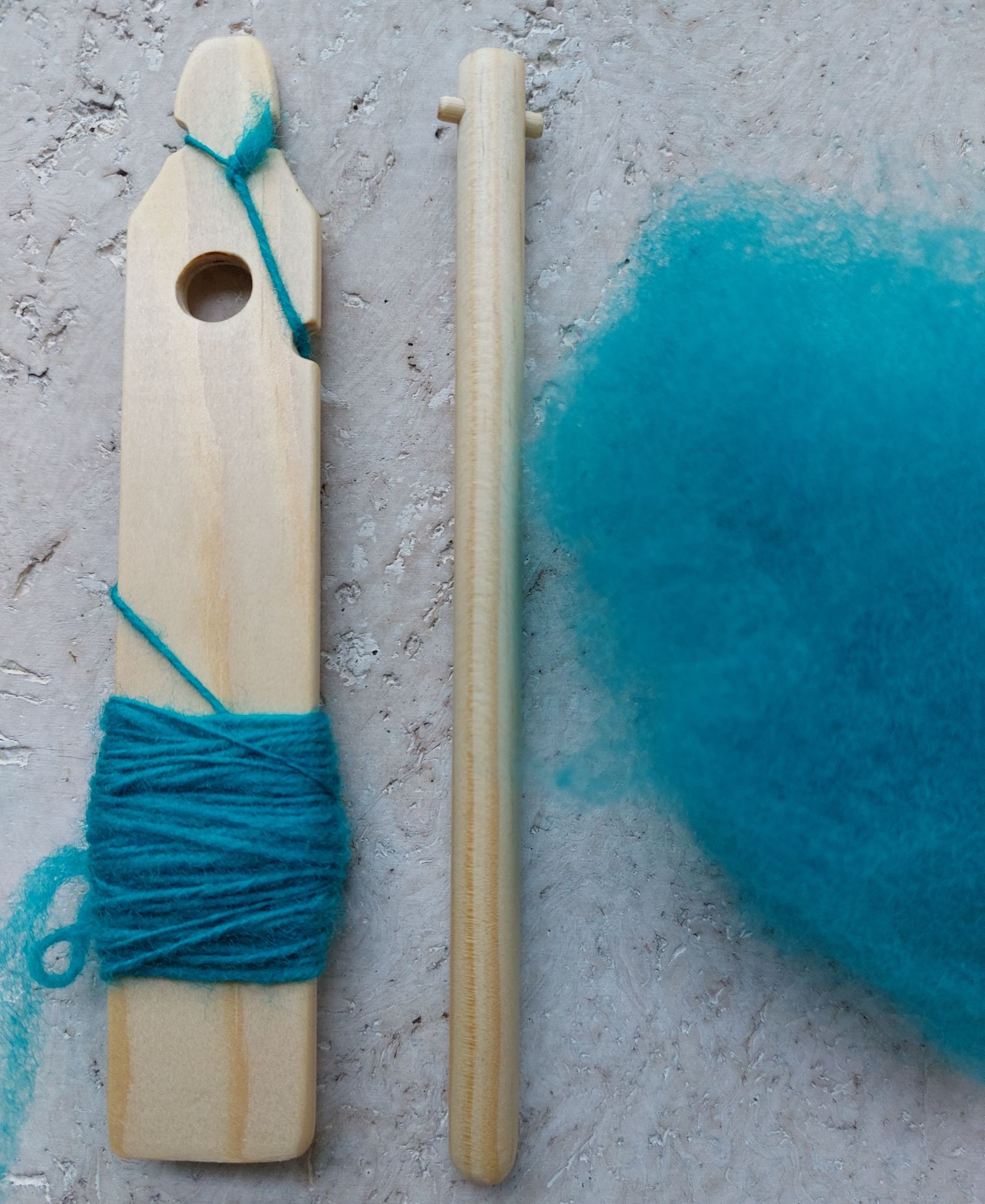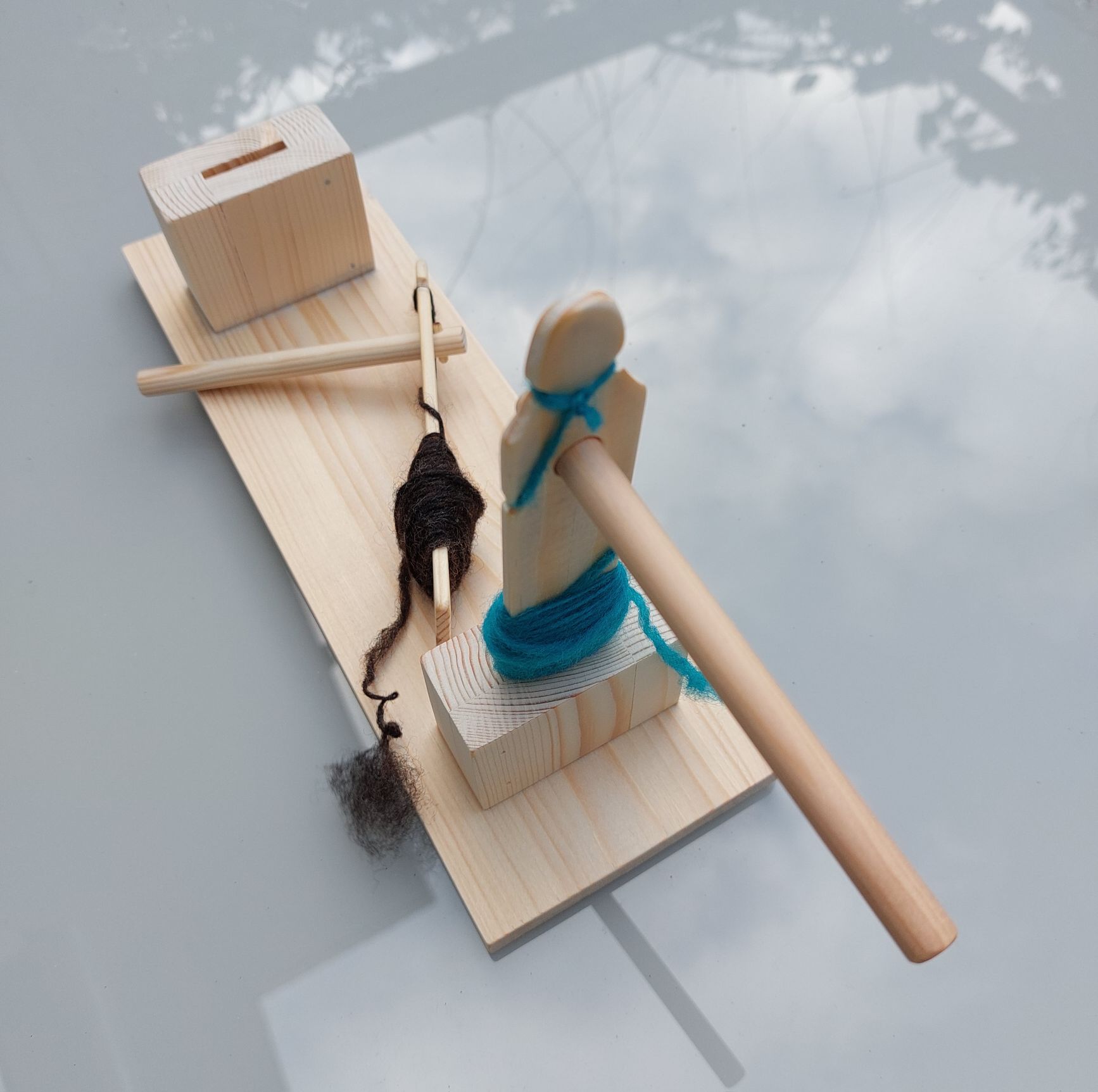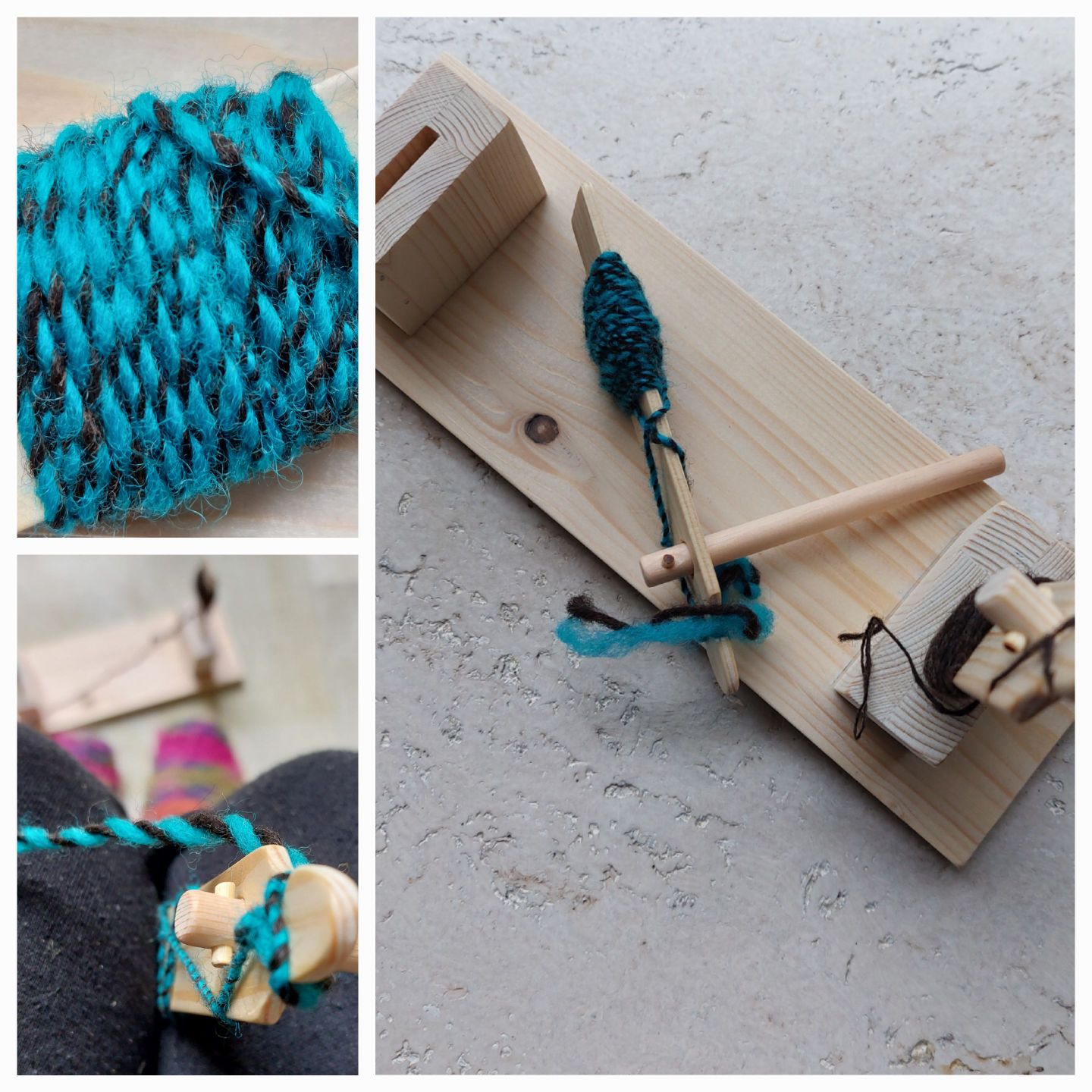On Juli 2018 i was working as a reenactor at the Iron Age farm in Dongen Netherlands, where i volunteered knitting nets, there i saw i few woman spinning wool with a spindle. My thoughts were ”that’s nice, i can do that too” and asked if i could try that, of course and i spun my ”first ” thread. ”You can do that well” was her reaction. They didn’t know that i spent 42 years making artificial flies where wool and other fibers are spun around a thread for fly fishing. The simple spindle was a thin tapered stick wit a clay baked disc at the bottom. At the top there was a notch made to fasten the half knot in order to start spinning.

I thanked the women for letting me spin and continued knitting my nets. When i got home i went the other day to the river Maas to search for sticks and river clay and made my first Iron Age spindle, (dropspindle).
I spun wool for a while with my Iron Age dropspinners and in September i discovered needlebinding. This became mij passion and i started giving needlebinding demonstations, workshops, on the Iron Age farm. August 2022 i have been invited to the European Woolcamp for Spinners and Felters to give workshops as a needlebinding instructor. The Woolcamp lasted 10 days and after the needlebinding workshops i went to learn how to spin with other tools, a spinning stick and saw how a ”turn-spinner” worked. Spinning with other tools worked now, but how would i like a real spinning wheel ? and could i learn it ? went through my head. Came home went to buy wood to make a ”turn-spinner”.
My Woolspindle.
I used to play with a wooden spinning rattle as a kid, it made a lot of noise which was not always appreciated. The movement of the rattle is exacly the same as the woolspindle.

On the Iron Age farm where i work as a reenactor ( i knit fishing nets and needlebinding) i found these tools used for flax spinnig.

My “turn-spinner” spins very well and i call it : ”Woolspindle”, Spinplankje in Dutch. I also had the woolspindle tested by wool spinners and she told that the woolspindle also works easily to get children spin.


My woolspindle is a small tool, 14.8 cm long, 2.5 cm wide and 4.5 mm thick and the hole is 9 mm in diameter, the handle is 14.8 cm long and the diameter is 9 mm. The woolspindle is a small tool and there fore easy to take with you, very handy and fits easily in a handbag.
I had received some blue wool to try, i don’t remember the name of the wool, but it went well.

Spinning with the Woolspindle is a relaxed actvity and you can spin your woolen thread as thin or thick as you can because you can control the twist of the thread easily. On request i made 2 different lenght handles 13 and11 cm long , the smallest is ideal for children.

My woodspindle in a dok (Lazy Kate).

Video: how to Spin wool with my Woodspindle/Spinplankje.
My woolspindle in a dok (Lazy Kate).

With my woodspindle you can plying 2 singles.

At my feet is the Lazy Kate, and on my feet one and a half year old needlebind slippers /sloffen.

I have practiced a bit with the woolspindle and it is going well now, i now get a very even thread.

With the woolspindle i can also try out whether i can easily learn how to spin, so that i can consider purchasing a spinning wheel.
If you are going to spin a woolen thread you get a single thread which is spun clock wise. If you want a strong thread you will spin (plying) 2 or 3 together anti-clock wise. There are many ways to spin a thread, and they are described in the book below. This is actually a must have book if you want to learn how to spin.

I am very happy with this book, it tells what you need to know when you start and also a book for the proffesinals.
